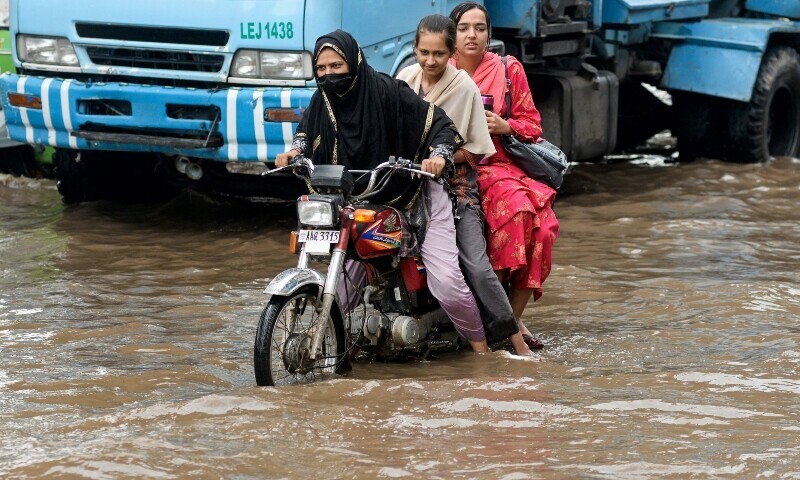Heavy monsoon rains have unleashed chaos in Punjab and Balochistan, with at least 11 people losing their lives and many others injured in the deluge. Lahore, the capital of Punjab, and its surrounding districts grappled with heavy rainfall, leading to severe flooding and disruption of daily life. The inadequate drainage system in Lahore was glaringly exposed as the city struggled to cope with the incessant downpours.
The rainfall data from the Water and Sanitation Agency’s Monsoon Control Room painted a grim picture, with Lahore receiving an average of 58.8mm of rain. Some areas like Nishtar Town, Lakshmi Chowk, and Paniwala Talab bore the brunt of the storm, recording exceptionally high rainfall numbers. The downpours, occurring in two distinct spells, overwhelmed the city’s drainage infrastructure, resulting in waterlogging in key areas like Jail Road, Qurtaba Chowk, and Gulberg.
The situation on the ground was dire, with the rainwater mixing with sewage, creating a looming public health crisis. Tragically, a child lost their life to an electrocution incident in Yakki Gate, highlighting the dangerous consequences of the storm. The power outages, compounded by the flooding, left thousands stranded without electricity, further exacerbating the residents’ woes.
While efforts were made to clear the water from some areas, residents in low-lying regions like Farrukhabad and Johar Town faced immense challenges due to the lack of adequate drainage systems. The impact of the monsoon extended beyond Lahore, affecting various districts across Punjab, including Khanewal, Rawalpindi, and Sahiwal, among others. The casualties and injuries reported underscored the gravity of the situation, with incidents of house collapses and infrastructure damage adding to the toll of the calamity.
In parallel, Balochistan also grappled with the fury of the rains, with incidents of casualties reported in Khuzdar and Mastung districts. The heavy rainfall, coupled with strong winds, triggered tragic events, including a wall collapse and a fatal road accident, underscoring the widespread impact of the inclement weather in the region.
The repercussions of the rains were not confined to human casualties but extended to environmental degradation and infrastructural damage. In Gilgit-Baltistan, the heatwaves accelerated glacial melting, leading to flooding, soil erosion, and disruptions in power and water supplies. The rising water levels in rivers and streams posed a significant risk to downstream communities, severing vital links and endangering homes and livelihoods.
As the region grappled with the aftermath of the deluge, concerns over climate change and its implications loomed large. The rapid glacial melting and escalating environmental challenges underscored the urgent need for robust disaster management strategies and climate adaptation measures to mitigate future risks and safeguard vulnerable communities.
Amid the chaos, initiatives like the geo-fenced SMS alerts by Jazz and the NDMA offered a glimmer of hope, aiming to enhance public awareness and enable timely evacuations in flood-prone areas. The collaboration sought to leverage technology for effective disaster preparedness, underscoring the importance of community engagement and proactive measures in mitigating the impact of natural disasters.
As Punjab and Balochistan reel from the devastation wrought by the relentless rains, the focus shifts to recovery and resilience-building efforts. The grim aftermath serves as a stark reminder of the pressing need for sustainable urban planning, robust infrastructure, and climate-resilient strategies to protect lives and livelihoods in the face of escalating climate risks.

